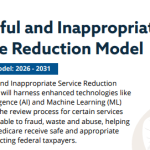
Impaired Driving Prevention Month: Healthcare Outreach Toolkit
Turnkey toolkit for National Impaired Driving Prevention Month; evidence, leadership actions, and NHTSA/CDC resources to curb holiday crash injuries.
Home » Archives for Simon Barr » Page 2

Turnkey toolkit for National Impaired Driving Prevention Month; evidence, leadership actions, and NHTSA/CDC resources to curb holiday crash injuries.

The Centers for Medicare & Medicaid Services (CMS) will implement the Wasteful and Inappropriate Service Reduction (WISeR) Model beginning January 1, 2026, through December 31, 2031. This pilot applies to Original Medicare only, not Medicare Advantage, and operates in six states: Arizona, New Jersey, Ohio, Oklahoma, Texas, and Washington.

Celebrate National Rural Health Day with turnkey facts, leadership actions, and NOSORH/CDC toolkits to close access gaps and advance rural equity.

Drive seizure preparedness during National Epilepsy Awareness Month with ready-made toolkits, facts, and leadership actions for enterprise-wide impact.

Pancreatic Cancer Awareness Month resources: stats, leadership actions, and PanCAN toolkits to amplify early detection and equity this November.

The U.S. Food and Drug Administration (FDA) has awarded the first-ever National Priority (NP) Vouchers to nine sponsors as part of its new Commissioner’s National Priority Voucher (CNPV) Pilot Program. These vouchers provide priority review for future submissions, supporting the rapid advancement of treatments in areas of public health importance such as antimicrobial resistance, rare diseases, and domestic manufacturing resilience.

Outsourcing utilization management helps payers reduce compliance risk, stay aligned with CMS/NCQA regulations, and maintain audit readiness. Learn how BHM delivers daily compliance protection.

Drive early detection and cost savings during COPD Awareness Month with our ready-made facts, action steps, and NHLBI/COPD Foundation toolkits.

A clear timeline of U.S. healthcare price transparency, from early state actions and ACA mandates to today’s CMS rules and enforcement.

Get turnkey facts, toolkits, and executive action steps for National Home Care & Hospice Month to boost quality, recognition, and community engagement.